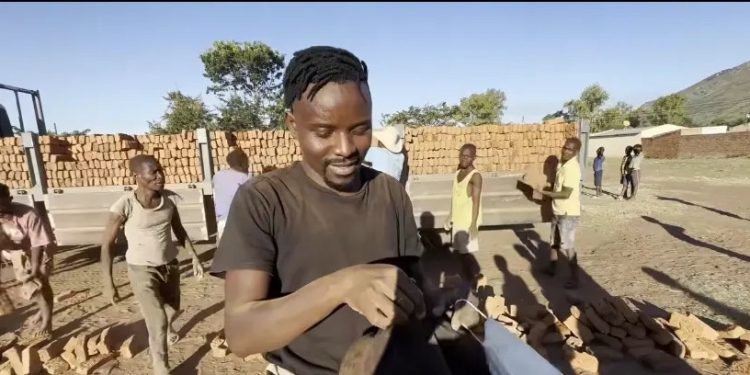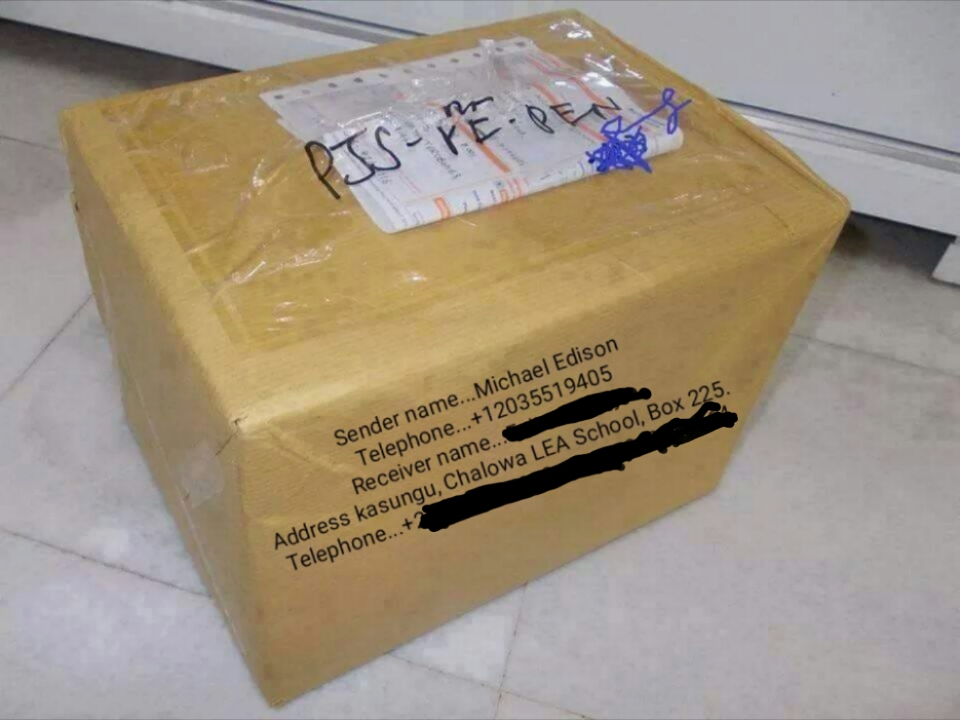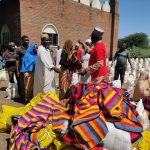By Dr. Abu Ameenah Bilal Philips
www.bilalphilips.com
Many individuals have posed a question similar to this one, “How can Dr. Bilal Philips develop a series using images when the Prophet Muhmmad salallahualahi wa sallam prohibited the use of images?” And because of these questions, Dr. Bilal Philips has included the Fatwaa on the use of images for children on the back of the Eemaan Reading Series brochure and it is also reproduced here.
Aaishah said, “I used to play with dolls in the presence of the Prophet salallahualahi wa sallam, and my girlfriends used to play along with me. Whenever, Allaah’s Messenger salallahualahi wa sallam would enter, they would hide from him. So he called them to play with me.” [1]
In the classical commentary on Saheeh al-Bukhaare entitled Fat-h al-Baaree, Ibn Hajar al-‘Asqalaanee wrote the following:
“This hadeeth is used as evidence for the permissibility of making dolls and toys with human and animal forms for the purpose of girls playing with them. This category has been specifically excluded from the general prohibition against making images. ‘Iyaad [2] stated this to be categorically so and related that it was the position of the majority of scholars. He further related that they permitted the selling of toys for girls in order to train them from their youth in their household affairs and in dealing with their children. [3]
Ibn Hibbaan entitled a chapter in his Saheeh : “The Permissibility for Children and Women to Play with Toys” and another: “A Man’s Giving Permission to His Wife to Play with Dolls”, however, his not limiting the permission to child-wives, is a questionable position.[4]
Aboo Daawood and an-Nasaa’ee collected this hadeeth in another chain from Aaishah in which she said, “When Allaah’s Messenger (pbuh) arrived after the expedition to Tabuk or Khaybar, the wind raised an end of a curtain which hung in front of my closet, revealing some dolls which belonged to me. He asked me, ‘What is this?’ I replied: My dolls. He saw among them a horse made of wrapped cloth with wings, and asked, ‘What is this I am seeing among them?’ I replied: A horse. He asked, ‘A horse with wings?’ I replied: Have you not heard that Solomon had horses with wings? Allaah’s Messenger (pbuh) laughed so heartily that I could see his molar teeth.”[5] This hadeeth is very clear that the meaning of playthings (lu‘ab) mentioned in the earlier narration does not refer to humans.
Al-Khattaabee [6] stated that this hadeeth indicates that playing with dolls is not like playing with other images which were warned about. And permission was given to Aaishah regarding them because she was not mature at the time.
Al-Khattaabee’s categorical statement that Aaishah was not mature at the time is questionable, however, it is a possibility. Aaishah was close to fourteen or past fourteen at the time of the Battle of Khaybar. As regards the time of the Battle of Tabuk, she had definitely reached maturity by then. Thus, the narrations of this hadeeth which mentioned Khaybar are more likely correct and they agree with al-Khattaabee’s opinion, which is more preferable than the contradictions (inherent in those which mention Tabuk).”[7]
The companion Ar-Rubayya bint Muawwath related that the Prophet (pbuh) sent a messenger to the village of the Ansaar on the morning of the day of ‘Aashooraa (10th Muharram) to announce that whoever had already eaten should not eat any more and fast the rest of the day; and whoever was already fasting should complete the fast. She went on to say, “Since then, we used to fast on that day (10th Muharram) and also make the children fast. We would make toys figures out of wool for them, and if any of them cried for food, he would be given one until it was time to break the fast.”[8]
The Islaamic magazine, al-Usrah, published Saudi Arabia grappled with the issue of figurative illustrations when they decided to launch a magazine especially targeted towards children. They wanted to provide an alternative to what was present in the marketplace, which had little Islaamic content and was introducing some un-Islaamic values to their readers. They noticed that every single magazine for children printed in the Arab world as well as in the west was filled with illustrations of children, animals, etc. The reality is that colorful drawings are something that children are attracted to. If given the choice between reading a text with pictures and a text without them, they will always choose the illustrated text. The editors of al-Usrah thought of trying to address this situation by using drawings of inanimate objects with features added to make them look like live characters, but they decided that technique was too limited to use for the whole magazine.
In researching the Sharee’ah issues related to the drawing of living creatures, they reached the following conclusions:
The basic rule regarding figurative illustrations is that they are haraam.
The reason for the prohibition is that it involves imitation of Allaah’s attributes of Creator and Bestower of Forms, in addition to the role of images in paving the way for shirk by magnifying the greatness of the illustrated beings, which leads to their being worshipped.
There is an exception to the general prohibition for children’s toys, as is specifically indicated in hadeeth texts, due to the fact that the main reason for the prohibition is not present and that there is a tangible benefit, worthy of consideration, in their use.
This exception to the prohibition of image-making is also applicable to whatever represents a tangible benefit, given consideration by the Sharee‘ah, or prevents or removes an expected harm, whether in the fields of education, public safety or other areas.
Pictures drawn specially for children enter into the exception, by analogy with children’s dolls and toys, on the one hand, and in order to realize the benefits recognized by the Sharee’ah and due to the pressing need for them in contemporary children’s stories, on the other hand.
In this regard, Shaykh Naasiruddeen al-Albaanee stated in his book, Adaab az-Zafaaf:
“These two hadeeths (the hadeeth of Aaishah’s dolls and the hadeeth about the sahaabah’s practice of giving their fasting children toy figures to distract them from their hunger) indicate the permissibility of creating images and of owning them when there is an educational benefit in doing so, one that will help in the cultivation and development of the personality. Whatever else is of benefit to the Muslims and Islam may be included in the same ruling of permissibility of picture making and use, but everything beside that remains under the basic prohibition.” [p. 196]
In the same vein, Shaykh ‘Abdullaah ibn Jibreen (member of the Committee of Leading Scholars, Riyadh, Saudi Arabia) responded to a long, detailed question on image-making put to him by the editors of al-Usrah magazine by saying, “I have considered what has been mentioned in the question concerning the temptations and deviations to which Muslim youths are being exposed both within and without the lands of the Muslims in the form of films and magazines, which are (so widespread as to be virtually) unavoidable, which have filled the Muslims’ houses and palaces, and which cause Muslim children to imitate what they see and hear and read in them in their speech and actions, the contents of which are frequently evil and corrupt. [After weighing these factors,] I say: When an alternative exists to engage children and youth which is free, or relatively free, from such corrupt ideas and values, I see it as permissible, because among the basic principles of the Sharee‘ah is choosing the lesser of two evils in order to avoid the greater harm. Without any doubt, for Muslim children to be busy in reading Islaamic magazines that include some pictures used to make ideas clearer is less serious than their habitual viewing of movies and picture (magazines) that ruin their morals, pervert their innocence and divert them away from good. That is what is apparent to me, and Allaah knows best.”
Shaykh Abdul Azeez al-Qaari’ (Imaam of Masjid Qubaa and professor of tafseer and Quranic recitation at the Islamic University of Madeenah) had this to say about image-making in al-Usrah:
“Regarding the hadeeth of Aaishah that she played with dolls in the presence of the Prophet (pbuh), and, in some versions of the hadeeth, that one of the dolls was in the shape of a winged horse, and that when the Prophet (pbuh) asked her about it, she replied, ‘Didn’t you hear that [Prophet] Sulayman had a horse with wings?’ to which the Prophet (pbuh) responded by laughing; this hadeeth indicates the permissibility of children’s figurative toys, owning them and using them, whether they are clearly representative or not, and whether skillfully or crudely fashioned. There is no basis in the hadeeth for making a distinction. Those who say that Aaishah’s dolls were not distinctly representative have made an arbitrary judgement not based on any evidence. What do they say about a winged horse?”
The variation in the texts on this subject, from severe threats of punishment to less severe threats and from the prohibition of the use of images to allowing their use, indicates that the law revolves around the consideration of the accompanying benefit and harm. If the law was fixed on prohibition, far be it for the Prophet (pbuh) to allow Aaishah to play with those dolls and that horse, all of which were three-dimensional images. From that we know that the rule is connected to benefit and harm. If the harm involved is dominant, as in the case of idols and statues worshipped in place of Allaah, or in the case of pictures of important or pious people hung on walls as a sign of respect, which is a major avenue leading to shirk, the rule is prohibition. On the other hand, if the benefit is clearly dominant, as in the case of children’s toys, or images on rugs or pillows, etc., which are put to use without respect, then the rule is permissibility. Children’s magazines, books and stories take the same ruling as children’s toys and dolls, since the benefit in toys and dolls is no clearer than that in these other (educational) media.
————————————————————————————-
Footnotes
Sahih Al Bukhari, vol.8, p 95. no.151 and Sahih Muslim, vol. 4, p.1299, no. 5981. See also Sunan Abu Dawud, vol. 3, p.1373, no. 4913.Al-Qaadee Iyaad (1084-1149CE) was a Moroccan scholar who was among the leading scholars of hadeeth of his time.Ibn Hajar stated here that some scholars like Ibn Battaal, held that the hadeeth of Aaishah was abrogated and that Ibn Abee Zayd related that Maalik disliked that a man purchase dolls for his daughter. Consequently, ad-Daawoodee also concluded that the hadeeth was most likely abrogated. Fat-h al-Baaree, vol. 10, p. 544.Ibn Hajar added here that al-Bayhaqee, after narrating this hadeeth stated that the prohibition against making images is undeniable / unshakeable, therefore this permission to Aaishah should be considered as having taken place before the prohibition. Ibn al-Jawzee categorically held that this was the correct position. Al-Munthiree stated that if the toys were image-like, the permission to Aaishah must have been before the prohibition. Otherwise, playthings without images may also be called toys / dolls. Al-Haleemee stated categorically that if the toy has an image like an idol, it is not permissible, otherwise it is permissible. After quoting ad-Daawoodee as saying that al-la‘ib bi al-banaat meant playing with “young girls” and that bi here meant ma‘a (along with), Ibn at-Teen thoroughly refuted him. [Ibn Hajar went on to say that] the narration of Ibn ‘Uyaynah related in al-Jaami‘ from Hishaam ibn ‘Urwah “… and some young girls used to come and play with them along with me,” and that of Jareer from Hishaam “I used to play with dolls (al-banaat), and they were toys,” collected by Aboo ‘Awaanah and others also refutes ad-Daawoodee. Fat-h al-Baaree, vol. 10, p. 544.Sunan Abu Dawud, vol. 3, p. 1373, no.4914 and authenticated in Saheeh Sunan Abee Daawood, vol. 3, p. 932, no. 4123.
Hamd ibn Muhammad al-Khattaab (931-998 CE) was an Afghani scholar of Fiqh and hadeeth well known for his commentery on Sunan Abee Daawood called Ma’aalim as-Sunan, a commentery on Saheeh al-Bukhaaree, and a hadeeth dictionary called Ghareeb al-Hadith.Fat-h al-Baaree, vol.10. pp. 543-4.
Sahih Al Bukhari, vol.3, pp. 103.4. no. 181.



















